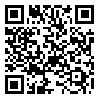BibTeX | RIS | EndNote | Medlars | ProCite | Reference Manager | RefWorks
Send citation to:
URL: http://umj.umsu.ac.ir/article-1-3421-en.html
Background & Aims: The increased prevalence of Narcissistic personality and development of psychobiological approaches in recent decades has led to a shift in prevention and treatment of this disorder. So, current research is aimed at determining the role of temperament-character dimensions and brain-behavioral systems in predicting narcissistic personality characteristics.
Materials & Methods: This correlational descriptive study used simple random sampling method and included 368 female students of Urmia University dormitories in 2015. The study tools were Carver & White Behavioral Activation System / Behavioral Inhibition System Scale, Temperament-Character Inventory (TCI 125) and Ames Narcissistic Personality Inventory (NPI – 16). Statistical tests including descriptive statistics, correlation coefficient and regression equation were applied to analyze data with SPSS software version 22.
Results: There was a significant correlation between narcissistic and temperament, all four dimensions (NS, HA, RD & P), two dimensions of Character (ST & CO) (p<0.01), and two subscales of BAS (RR, FS &) (p<0.05). Regression of narcissistic personality characteristics would be predicted by 8 variables.
Conclusion: Narcissistic personality characteristics would be predicted by 6 variables of temperament and character dimensions and two variables of brain-behavioral systems.
SOURCE: URMIA MED J 2016: 27(9): 800 ISSN: 1027-3727
| Rights and permissions | |
 |
This work is licensed under a Creative Commons Attribution-NonCommercial 4.0 International License. |





